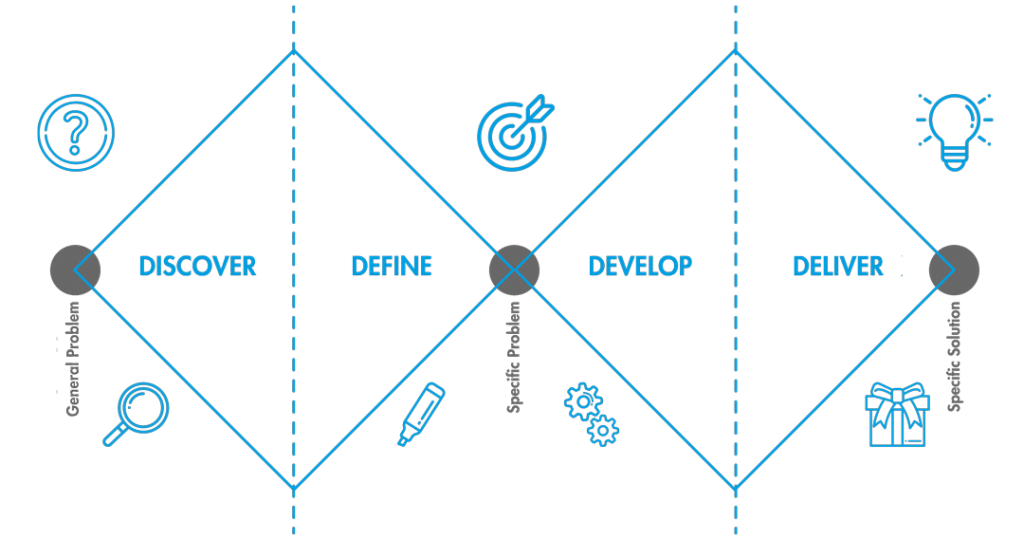Design Thinking
Design Thinking
What is Design Thinking?
Design Thinking is an iterative process that utilizes a set of techniques to help generate, develop, and test innovative ideas for products and services, which provide value to the customer by solving their real needs. Innovation happens at the intersection of desirability, feasibility, and viability. This people-centered approach for finding solutions to complex problems typically follows a version of the Double Diamond Model:

The actions taken in each of the four phases are:
- DISCOVER. Understand that you are not your user. Empathize with them through observation, engagement, and immersion to truly understand what motivates them. Focus and clarify the need or opportunity. Popular techniques for this phase include Personas, Customer Journey Map, SWOT Analysis, and The 5 Whys.
- DEFINE. Reframe the question to “how might we…”. Review and narrow your insights to establish your project’s main challenge. This includes quantitative research on the what, who, where, when, and how, and qualitative research on why the problem or opportunity exists. Popular techniques for this phase include Focus Groups, Mystery Client, Stakeholders Maps, and Design Challenge.
- DEVELOP. Ideate. Brainstorm to define a more complete idea and understand the prototype objective. Quickly test out what works and discard what doesn’t. Popular techniques for this phase include Brainstorming, What If, Storyboarding, and Infographics.
- DELIVER. Make and launch the product or service. Gather feedback about it. Popular techniques for this phase include Prototyping Roadmap, Feedback Matrix, and User Testing.
For an easy to follow guide on how to use these techniques and 65 others, we love “DESIGN-pedia” by Juan Gasca and Rafael Zaragoza.
Why is it important?
Being creative is difficult. Being innovative is even more difficult. Successfully applying innovation in product development and problem solving for your customers can be nearly impossible. Instead of focusing on a very technological approach, on whether something is technically possible, or if an idea is economically viable, Design Thinking starts by trying to learn what the user really wants, what they really need. Experiencing this innovative process can eliminate a scenario of spending time and money to develop a product no one buys.